As an Iowa boy who spent some time as a Marne Man, I was quite pleased to run across this photo from the Iowa Historical Society.
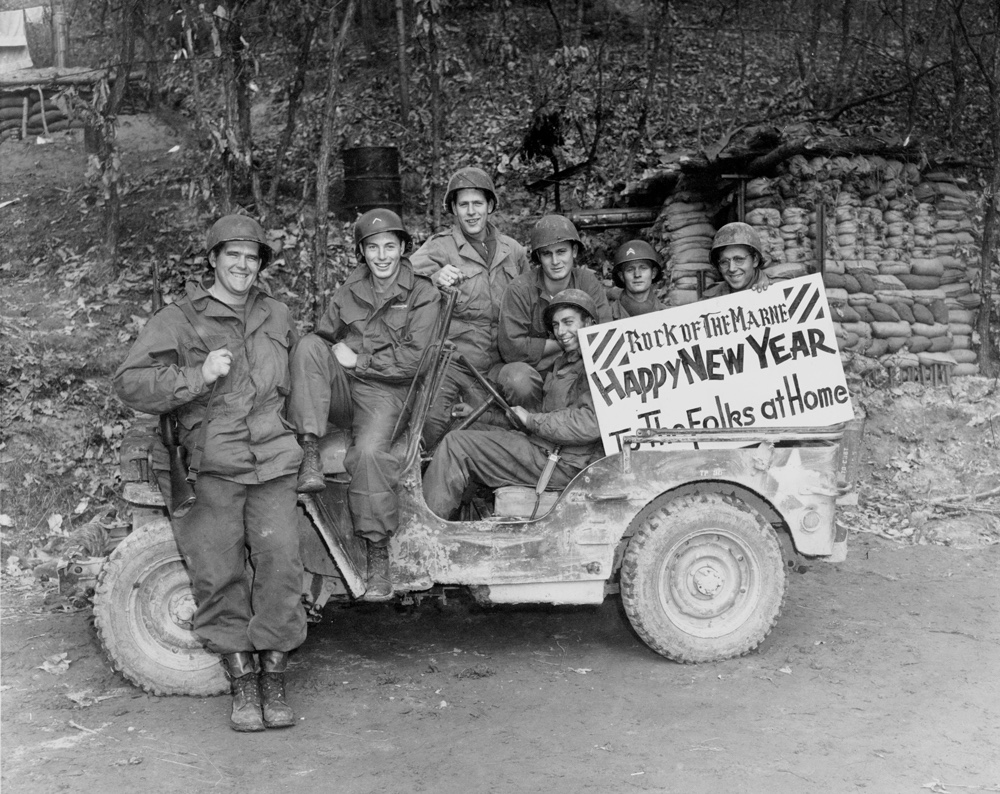
Iowa Soldiers at the “Rock of the Marne” Holding the Sign “Happy New Year to the Folks at Home,” 1951
As an Iowa boy who spent some time as a Marne Man, I was quite pleased to run across this photo from the Iowa Historical Society.

Iowa Soldiers at the “Rock of the Marne” Holding the Sign “Happy New Year to the Folks at Home,” 1951
In this look at Cold War history, we see a training film for Civil Defense Shelter Managers which depicts what life might be like for those who find shelter after a nuclear attack.
On December 24th, 1944, The Battle of the Bulge had started 8 days before with a massive push by the Germans to split the Allies in half and stop the use of the Belgium port of Antwerp. Many soldiers on both sides had become lost from their units and were looking for a place to stay. Three American Soldiers were lost around the area where the shack was. They saw the light from the small hunting cabin and the smoke from the chimney. They saw their chance to warm up. They knocked on the door and asked if they could come in. The German lady had a small chicken cooking for themselves but invited the Americans in to warm up and for the Christmas meal.
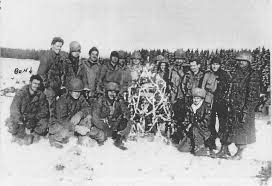
One of the American Soldiers was wounded, and the lady tried to make him comfortable. There was a language barrier for a time till one of the soldiers found out the lady could speak French as well as German. So, everything was going well, and the Americans were feeling right at home.
Then suddenly there was a knock at the door. The American’s went for their guns. The lady went to the door and answered it. There were four German soldiers who were also lost from their unit, and they asked the lady for shelter. The lady answered them with this, “Yes, you can come in for Christmas dinner, but I have other guests.” One German soldier remarked, “Americana.” She said, “yes, and that this was Christmas, and there would be no killing on this night.” She also told the Germans that they would have to lay down their weapons while they came in. She instructed the Americans to do the same.
There they were all in the room together, soldiers who a little while ago were bent on killing each other. Now, they were in a small room together with no weapons. Everyone could feel the tension in the air. It was very quiet for about ten minutes. Then one American soldier offered the Germans a cigarette. They obliged. One of the Germans who had medical training asked about the wounded American. He then began to help the wounded American and made him as comfortable as he could be.
By the time the meal was ready, the atmosphere was more relaxed. Two of the Germans were only sixteen, their corporal was 23. As Elisabeth said grace, Fritz noticed tears in the soldiers’ eyes, both German and American.
The truce lasted through the night and into the morning. Looking at the Americans’ map, the corporal told them the best way to get back to their lines and provided them with a compass. They asked if they should instead go to Monschau, the corporal shook his head and said it was now in German hands. Elisabeth returned all their weapons, and the enemies shook hands and left in opposite directions. Soon they were all out of sight, and the truce was over.
If you are in the Christmas spirit and want to watch a movie about the Battle of the Bugle, I would recommend Battleground. It was written by someone who was in the Battle of the Bugle. It is an all-time classic.
Sorry, I couldn’t find the whole movie. This is the preview.
The Palawan massacre occurred on 14 December 1944, during World War II, near the city of Puerto Princesa in the Philippine province of Palawan. The Japanese Imperial Army massacred 139 of 150 American POWs. The Palawan compound was named Camp 10-A by the japanese, and the prisoners were quartered in several unused Filipino constabulary buildings. Food was almost nonexistent; the prisoners received a daily meal of wormy Cambodian rice and a canteen cup of soup made from camote vines boiled in water (camotes are a Philippine variant of sweet potatoes). Prisoners who could not work had their rations cut by 30%.
The Japanese unit in charge of the prisoners and the airfield at Palawan was the 131st Airfield Battalion, it was command of Captain Nagayoshi Kojima, whom the Americans called the Weasel. Lieutenant Sho Yoshiwara commanded the garrison company, and Lieutenant Ryoji Ozawa was in charge of supply. Ozawa’s unit had arrived from Formosa in 1942 and had previously been in Manchuria. There was also a Military police and intelligence unit, called the kempeitai at Palawan, they were feared by anyone who fell into their hands because of their brutal tactics.
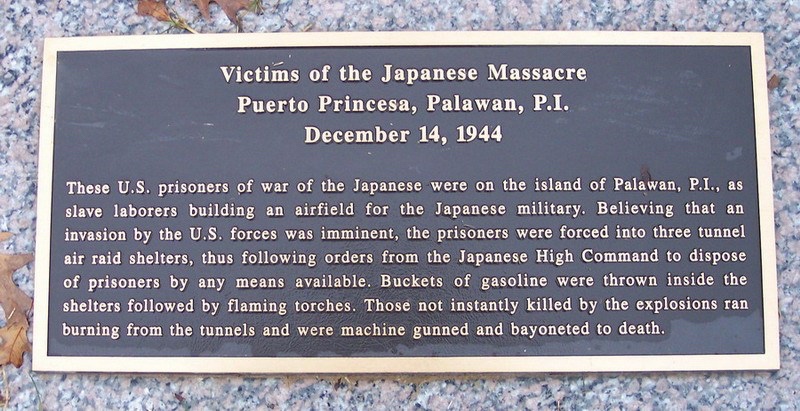
In September 1944, 159 of the American POWs at Palawan were returned to Manila. The Japanese estimated that the remaining 150 men could complete the arduous labor on the airfield, hauling and crushing coral gravel by hand and pouring concrete seven days a week. The men also repaired trucks and performed a variety of maintenance tasks in addition to logging and other heavy labor
An attack by a single American Consolidated B-24 Liberator bomber on 19 October 1944, sank two enemy ships and damaged several planes at Palawan. More Liberators returned on 28 October and destroyed 60 enemy aircraft on the ground. While American morale in the camp soared, the treatment of the prisoners by the Japanese grew worse, and their rations were cut. After initially refusing the prisoners’ request, the Japanese reluctantly allowed the Americans to paint American Prisoner of War Camp on the roof of their barracks. This gave the prisoners some measure of protection from American air attacks. The Japanese then stowed their supplies under the POW barracks.
On 14 December, Japanese aircraft reported the presence of an American convoy, which was headed for Mindoro, but which the Japanese thought was destined for Palawan. All prisoner work details were recalled to the camp at noon. Two American Lockheed P-38 Lightning fighter aircraft were sighted, and the POWs were ordered into the air-raid shelters. After a short time, the prisoners re-emerged from their shelters, but Japanese 1st Lt. Yoshikazu Sato, whom the prisoners called the Buzzard, ordered them to stay in the area. A second alarm at 2 p.m. sent the prisoners back into the shelters, where they remained, closely guarded.
Suddenly, in a deliberate and planned move, 50 to 60 Japanese soldiers under Sato’s leadership doused the wooden shelters with buckets of gasoline and set them afire with flaming torches, followed by hand grenades. The screams of the trapped and doomed prisoners mingled with the cheers of the Japanese soldiers and the laughter of their officer, Sato. As men engulfed in flames broke out of their fiery deathtraps, the Japanese guards machine-gunned, bayoneted and clubbed them to death. Most of the Americans never made it out of the trenches and the compound before they were barbarously murdered. Still, several closed with their tormentors in hand-to-hand combat and succeeded in killing a few of the Japanese attackers.
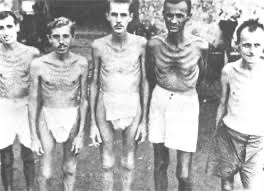
Marine survivor Corporal Rufus Smith described escaping from his shelter as coming up a ladder into Hell. The four American officers in the camp, Lt. Cmdr. Henry Carlisle Knight (U.S. Navy Dental Corps), Captain Fred Brunie, Lieutenant Carl Mango (U.S. Army Medical Corps) and Warrant Officer Glen C. Turner, had their dugout, which the Japanese also doused with gasoline and torched. Mango, his clothes on fire, ran toward the Japanese and pleaded with them to use some sense but was machine-gunned to death.
About 30 to 40 Americans escaped from the massacre area, either through the double-woven, barbed-wire fence or under it, where some secret escape routes had been concealed for use in an emergency. They fell and/ or jumped down the cliff above the beach area, seeking hiding places among the rocks and foliage. Marine Sergeant Douglas Bogue recalled: Maybe 30 or 40 were successful in getting through the fence down to the water’s edge. Of these, several attempted to swim across Puerto Princesa’s bay immediately but were shot in the water. I took refuge in a small crack among the rocks, where I remained, all the time hearing the butchery going on above. They even resorted to using dynamite in forcing some of the men from their shelters. I knew [that] as soon as it was over up above, they would be down probing among the rocks, spotting us and shooting us. The stench of burning flesh was strong. Shortly after this, they were moving in groups among the rocks dragging the Americans out and murdering them as they found them. By the grace of God, I was overlooked.
Eugene Nielsen of the 59th Coast Artillery observed, from his hiding place on the beach, a group of Americans trapped at the base of the cliff. He saw them run-up to the Japs and ask to be shot in the head. The Japs would laugh and shoot or bayonet them in the stomach. When the men cried out for another bullet to end their misery, the Japanese continued to make merry of it all and left them there to suffer. Twelve men were killed in this fashion. Nielson hid for three hours. As the Japanese were kicking American corpses into a hole, Nielson’s partially hidden body was uncovered by an enemy soldier, who yelled to his companions that he had found another dead American. Just then, the Japanese soldiers heard the dinner call and abandoned their murderous pursuit in favor of hot food. Later, as enemy soldiers began to close in on his hiding place, Nielson dived into the bay and swam underwater for some distance. When he surfaced, approximately 20 Japanese were shooting at him. He was hit in the leg, and bullets grazed his head and ribs. Even though he was pushed out to sea by the current, Nielson finally managed to reach the southern shore of the bay.
He was one of 11 prisoners of war who escaped the December 1944 massacre on Palawan Island in the Phillippines, where around 140 soldiers died when the Japanese put them into trenches, dumped gasoline on them and set them on fire. He was later a key witness in the War Crime Trials of 1945.
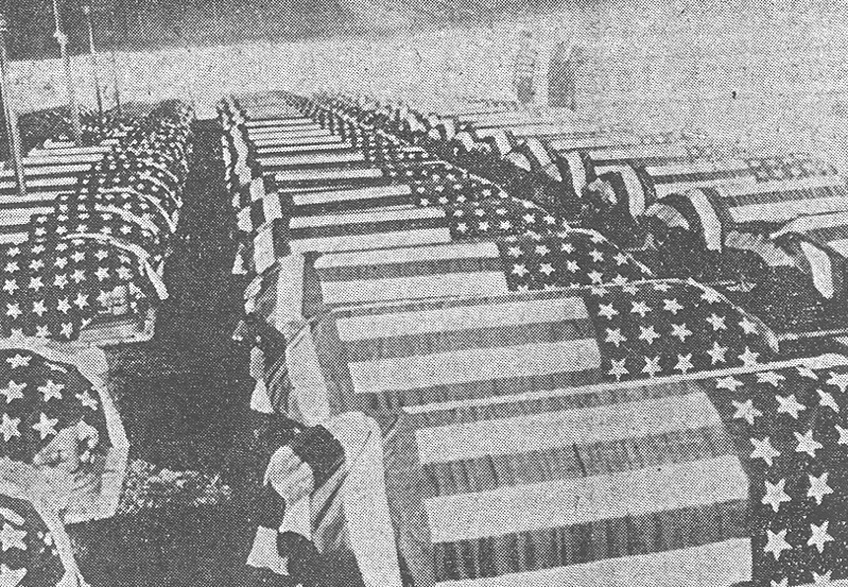
This biography tells the story of Glenn (“Mac”) McDole, one of eleven young men who escaped and the last man out of Palawan Prison Camp 10A. Beginning on 8 December 1941, at the U.S. Navy Yard barracks at Cavite, the story of this young Iowa Marine continues through the fighting on Corregidor, the capture and imprisonment by the Japanese Imperial Army in May 1942, Mac’s entry into the Palawan prison camp in the Philippines on 12 August 1942, the terrible conditions he and his comrades endured in the camps, and the terrible day when 139 young soldiers were slaughtered. The work details the escapes of the few survivors as they dug into refuse piles, hid in coral caves, and slogged through swamp and jungle to get to supportive Filipinos. It also contains an account and verdicts of the war crimes trials of the Japanese guards, follow-ups on the various places and people referred to in the text, with descriptions of their present situations, and a roster of the names and hometowns of the victims of the Palawan massacre.
www.humanitiestexas.org/news/articles/interview-rufus-w-smith-world-war-ii-pow
Today marks the 81st year since the surprise attack on Pearl Harbor, an event which resulted in the deaths of 2402 Americans and would plunge the United States into world war.
It is, as President Roosevelt proclaimed as he addressed a stunned nation, “A date which will live in infamy.”
While we will never forget that day, let’s also not forget those men and women who did what had to be done to keep us free. We owe them a debt to keep up the fight.
Operation Flipper was a raid by the Combined Operations to kill Field Marshall Erwin Rommel at his headquarters in Sidi Rafa, Libya, that would take place between 10-19 November 1941. The attack would use man from Combined Operations, Special Boat Services (SBS), No. 11 Commando, Long Range Desert Group (LRDG), and also the man from the Special Operations Executive (SOE) G(R). This raid was to be a smaller part of a more significant campaign to relieve Tobruk and push the Axis from North Africa.
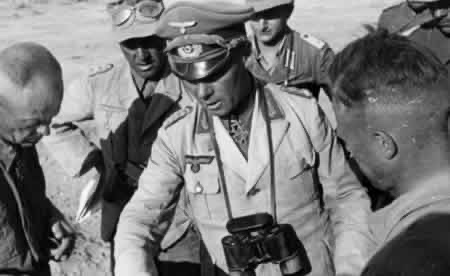
The operation had four main objectives, first and foremost was to kill Rommel at his headquarters, destroy the nearby Italian headquarters and its communications network, sabotage the Italian Intelligence Office in Appolonia and its communications network between Faidia and Lamdula, and lastly, conduct general sabotage actions elsewhere in the Axis forces rear area.
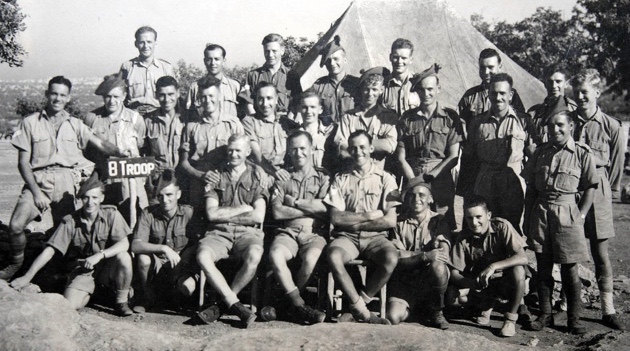
Leading the mission was Colonel Robert Laycock. His second in command was Lieutenant Colonel Geoffrey Keyes. On November 10, 1941, Laycock’s six officers and 53 men boarded the submarines Torbay and Talisman and left Alexandria harbor for Beda Littoria, Cyrenaica. Waiting for them on the beach was Captain Jock Haselden and an Arab soldier from the SOE’s G(R). They would guide the folbots (early versions of Klepper type canoes) to the beach and help them ashore. Once ashore, they would meet up with the rest of Haselden man, including two more Brits, a free Belgian, and another Arab soldier who stayed further inland; all had been dropped off by the LRDG earlier that day. Haselden’s team had local knowledge of the area; one of the Arabs would lead the assault team to the target while the rest of Haselden’s team would sabotaging the communications. Keyes got himself and all his men ashore. But as Layton and his men prepared to disembark, a storm struck. Heavy seas drove Talisman aground, and only Layton and seven men reached the beach.
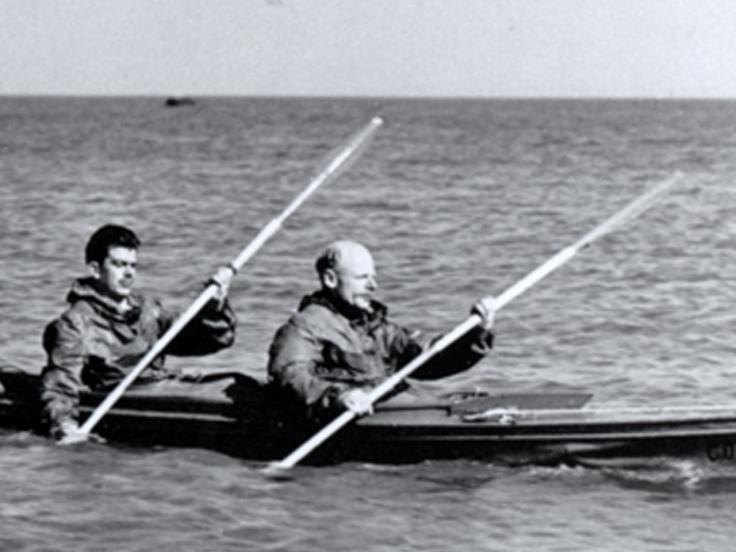
With his force cut in half, Keyes modified the plan. It would be a two-part assault; Keyes would attack Rommel’s HQ, and Lt. Roy Cooke would lead the Italian headquarters’ attack. Layton and a small force would defend the force’s escape route. On the evening of November 15, Keyes, Cooke, and their men headed inland. Despite the weather, the groups managed to reach their respective launch positions on the evening of November 17. At midnight, they attacked. Keyes, leading a three-person assault team, burst into the villa identified as Rommel’s headquarters. They surprised a German officer who was killed as he struggled with Keyes. The attackers then rushed down the hall, and Keyes opened a room where ten Germans were arming themselves. One of the Germans shot Keyes, killing him. What the team didn’t know was that Rommel had left the compound a week earlier for Rome. After Keyes’s death, things started to get worse.
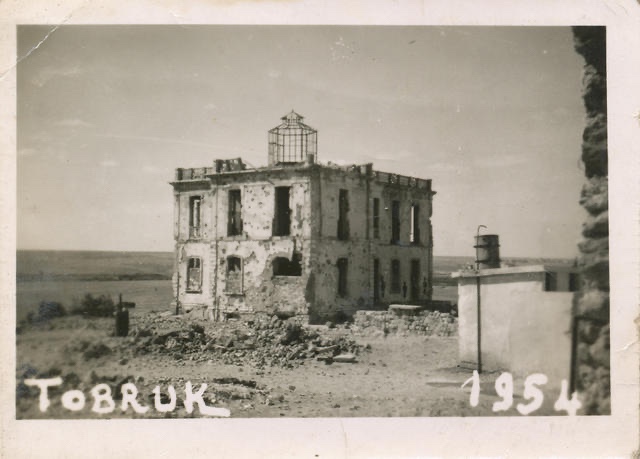
Campbell was shot in the leg by one of his men. He passed command to Sergeant Jack Terry and remained behind. Terry gathered the raiding team and retreated with 17 men to rejoin Laycock at the beach. Cooke’s men encountered a platoon or so of Italian police paratroopers. The Italians had been searching for the British raiders close to the village Mansura north of Cyrene. With the Italian and Germans looking for the raiding party, Laycock knew it would be impossible to re-embark on the submarines as they waited for the weather to improve. They were discovered and exchanged fire with local Italian and German troops. Low on ammo and aware that they could not stand off a larger force, Laycock ordered the men to scatter. Laycock and Terry made it to safety after 37 days in the desert. Bombardier John Brittlebank, one of the SBS teams who had guided the commandos in the folbots, escaped and survived alone in the desert for forty days until Allied troops picked him up. The rest of the raiding force was captured, some of them were wounded.
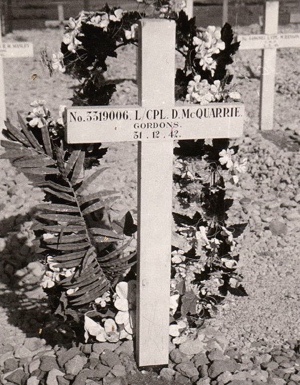
The raid was considered a failure by the British high command, but to the Germans, especially to Rommel, it showed what the Combined Operations could do. It would also help Winston Churchill decide to put the Commando’s and other groups under the SOE after the British military decide they didn’t need them anymore. Rommel was quoted as saying, “It was a brilliant operation and with great audacity.” Rommel ordered that Keyes and all the rest of the Commandos be buried with full military honors, sending his personal chaplain, priest Rudolf Dalmrath, to officiate. He had cypress crosses and wreaths made for the British and German dead. Rommel also instructed that photographs be taken of the ceremony and Keyes’ grave and sent them to his parents, a chivalrous act that increased British respect for him. British Special Operations would continue to wreak havoc thru out the Africa Theater of Operation, significantly contributing to the Allies victory.
“Apollo’s Warriors: United States Air Force Special Operations during the Cold War” was written by Col Michael E Haas, (USAF, Ret), and tells the story of the rise of Air Force Special Operations post World War Two and up until the late 70s. There are some fascinatikng periods in the command’s history like the creation of the Air Resupply and Communications Service.
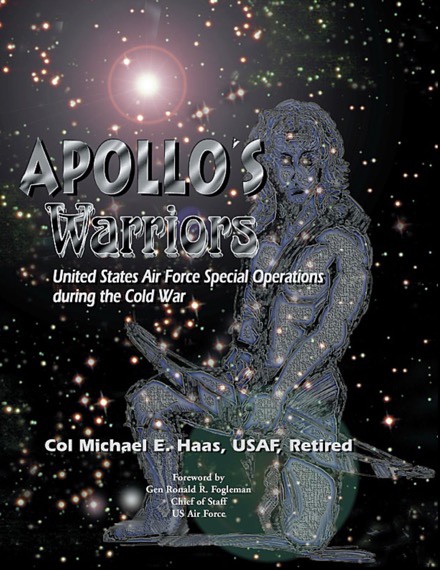
It’s available as a free download and definitely worth a read.
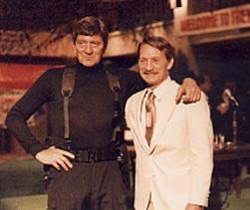
In 1985, Mack Bolan creator Don Pendleton held the first and only convention for his iconic crime fighter in San Francisco. Hosted by publisher Gold Eagle Books, over 1,000 fans attended to convention.
The tale of the event is told at www.donpendleton.com/mack-bolan-convention.